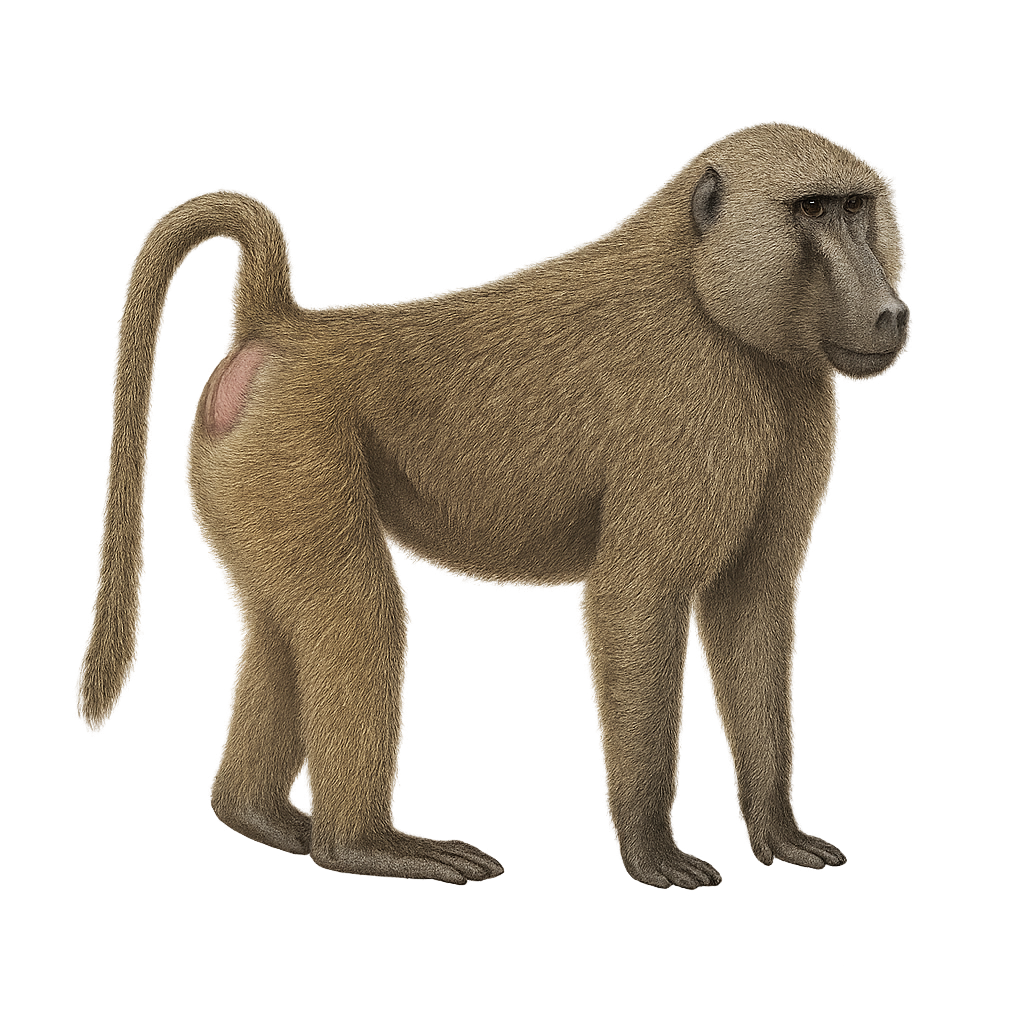Your wildlife photography guide.
Explore the yellow baboon in detail, study its behavior, prepare your shots.
Where to observe and photograph the yellow baboon in the wild
Learn where and when to spot the yellow baboon in the wild, how to identify the species based on distinctive features, and what natural environments it inhabits. The WildlifePhotographer app offers tailored photography tips that reflect the yellow baboon’s behavior, helping you capture better wildlife images. Explore the full species profile for key information including description, habitat, active periods, and approach techniques.
Yellow Baboon
Scientific name: Papio cynocephalus

IUCN Status: Least Concern
Family: CERCOPITHECIDAE
Group: Mammals
Sensitivity to human approach: Suspicious
Minimum approach distance: 10 m
Rut period: September to December
Gestation: 170-185 jours
Births: February to April
Habitat:
Savannas, open woodlands, shrublands
Activity period :
Primarily active during the day, with peak activity in the morning and late afternoon.
Identification and description:
The yellow baboon, Papio cynocephalus, is a medium-sized primate known for its yellow-brown coat and elongated face. It primarily inhabits the savannas and open woodlands of East Africa. Yellow baboons are social animals, living in groups that can number up to 200 individuals. They have a complex social structure with well-established hierarchies. Omnivorous, they feed on fruits, seeds, insects, and small vertebrates. Their behavior is marked by great adaptability, allowing them to thrive in various environments. Yellow baboons play a crucial role in their ecosystem, particularly in seed dispersal.
Recommended lens:
400 mm – adjust based on distance, desired framing (portrait or habitat), and approach conditions.
Photography tips:
To photograph the yellow baboon, it is advisable to use a telephoto lens of at least 400mm to capture detailed images without disturbing the animal. Since baboons are diurnal, the best light is usually found early in the morning or late in the afternoon. Look to capture social interactions within the group, as they reveal the complexity of their social structure. Be patient and discreet to observe natural behaviors.
The WildlifePhotographer App is coming soon!
Be the first to explore the best nature spots, track rutting seasons, log your observations, and observe more wildlife.
Already 1 429 wildlife lovers subscribed worldwide

